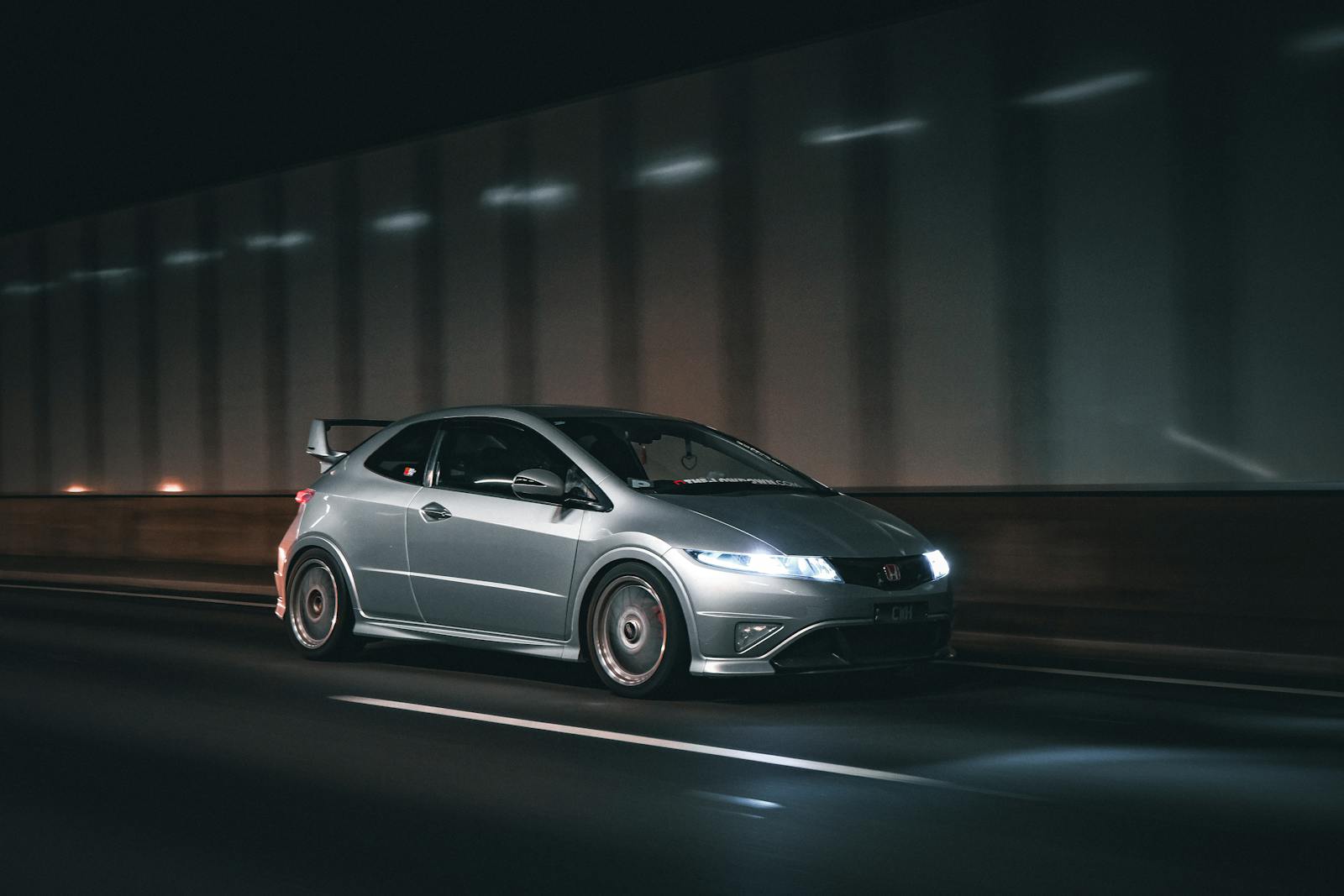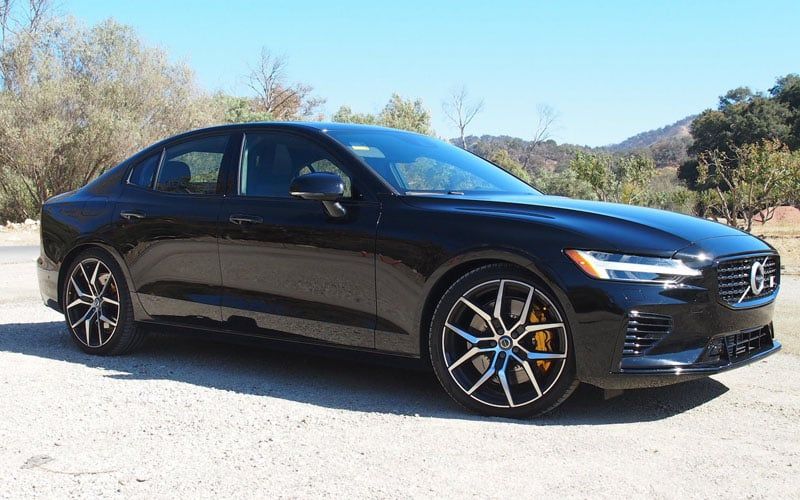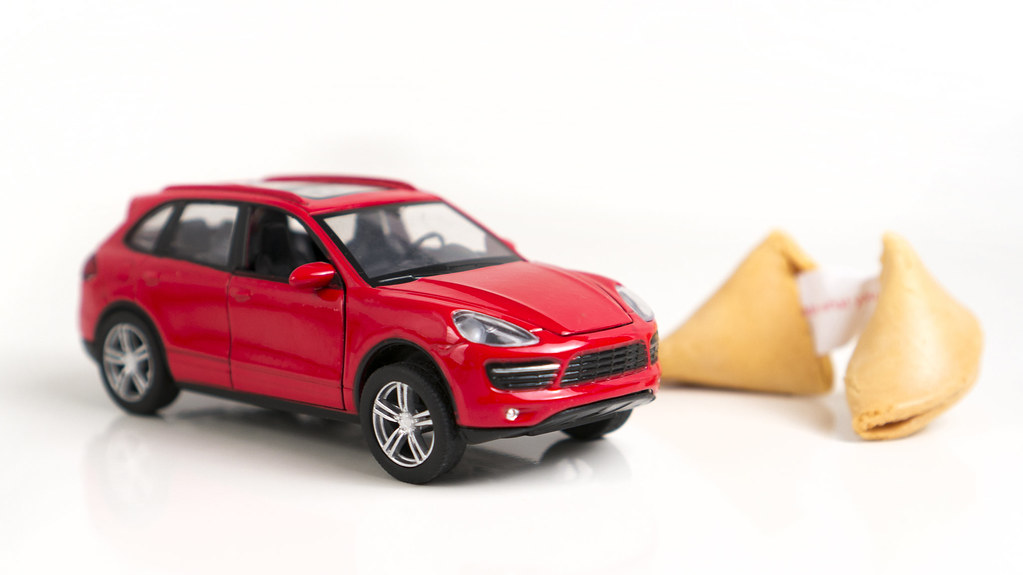
Let’s face it. Sometimes, our cars let us down in the most spectacular ways. You picture yourself cruising down the highway, windows down, living your best life, but then reality hits. Vehicle manufacturers roll out cars that look promising, sparkling on the dealership lot, but often don’t live up to the hype once they’re in your driveway.
It can truly suck after spending tens of thousands of dollars, or committing to a multi-year car loan, only to develop a serious case of buyer’s remorse. But guess what? It happens all too often, and you’re definitely not alone in feeling that sting of regret. With the price of new and used cars soaring these days, knowing exactly what you’re getting into before signing on the dotted line is more critical than ever.
Making a buying decision based only on a vehicle’s exterior aesthetics and shiny specs might just get you into a whole lot of trouble down the road. So, how do you avoid that gut-wrenching feeling of ‘I wish I hadn’t bought this’? One smart way is to learn from other vehicle owners’ mistakes. We’ve rounded up some real-world experiences to help you steer clear of the biggest automotive disappointments. Dive in!
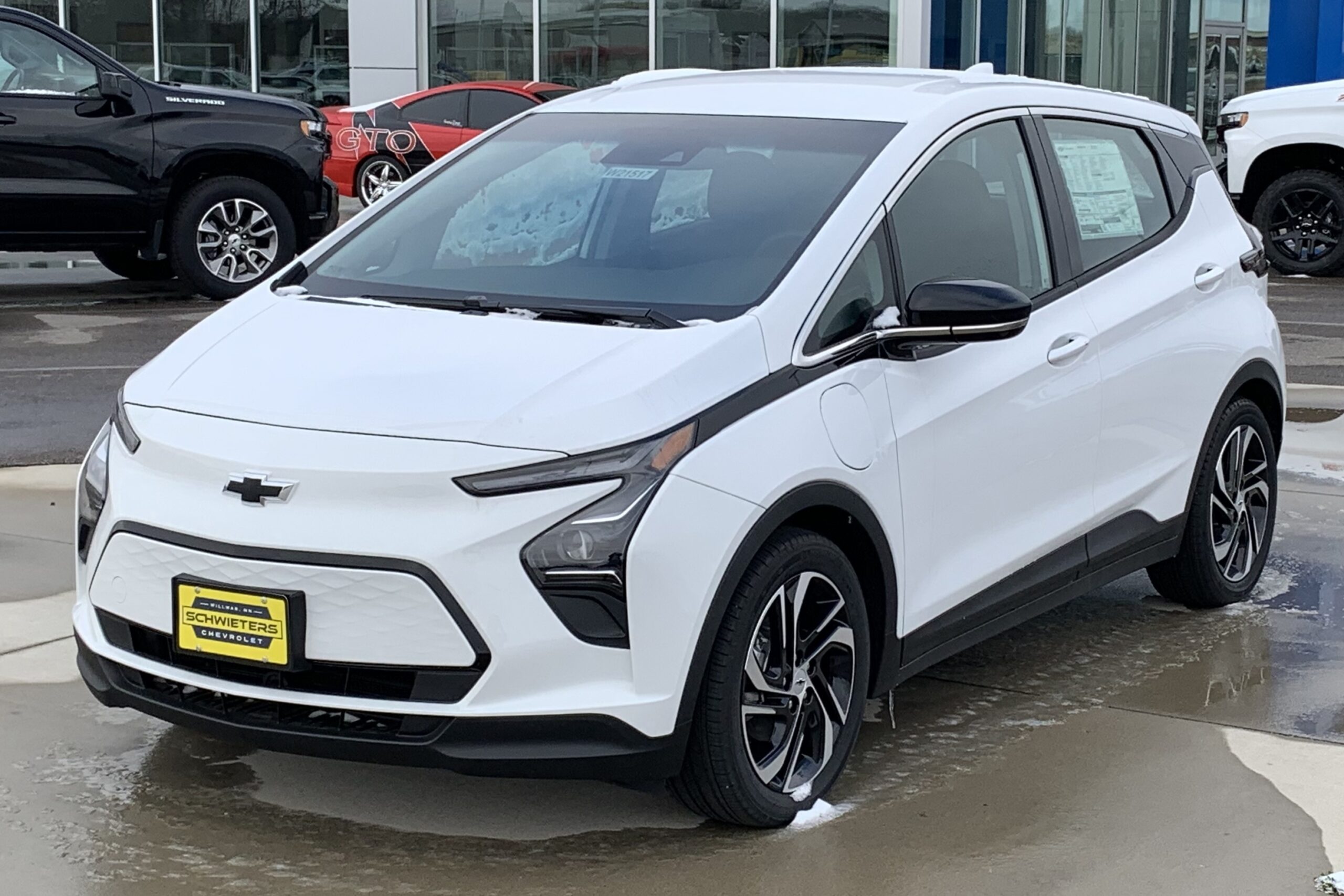
1. **Chevrolet Bolt**General Motors’ Chevrolet Bolt initially seemed like a fantastic deal, praised for its affordability and a respectable electric range that made it an attractive option for eco-conscious drivers. However, beneath that appealing exterior lay a host of problems that have left many owners shaking their heads in frustration. The most infamous issue, and certainly the scariest, revolved around the Bolt’s battery-related fires.
This alarming defect led to massive recalls in both 2020 and 2021, sending a clear message that something was seriously wrong. The problem wasn’t a minor glitch; it stemmed from lithium-ion batteries made by LG that had the potential to short-circuit, overheat, and even ignite into flames. Imagine the worry of owning a car with that kind of risk hanging over your head.
But the battery woes weren’t the only fly in the ointment for the Chevrolet Bolt. Owners also frequently cited a generally mediocre driving experience. The ride quality was often described as merely “so-so,” lacking the smoothness and refinement one might hope for in a modern electric vehicle. Rear passengers often found the space to be less than ideal, making longer journeys a bit cramped.
Even the handling, a key factor in daily driving enjoyment, failed to impress. When you combine potentially catastrophic battery issues with a generally uninspiring ride, it’s easy to see why so many Bolt owners quickly found themselves wishing they had opted for a different electric vehicle altogether. It’s a classic case of initial promise overshadowed by persistent problems.
Car Model Information: 2023 Chevrolet Bolt EUV Premier
Name: Chevrolet Bolt EV
Caption: 2022 Chevrolet Bolt EV
Manufacturer: General Motors
Production: unbulleted list
ModelYears: unbulleted list
Class: Subcompact car
BodyStyle: hatchback
Layout: Front-engine, front-wheel-drive layout
Predecessor: Chevrolet Spark EV
Categories: 2020s cars, All Wikipedia articles in need of updating, All articles containing potentially dated statements, All articles with unsourced statements, Articles containing potentially dated statements from February 2018
Summary: The Chevrolet Bolt EV (marketed in Europe as Opel Ampera-e) is a battery electric subcompact hatchback manufactured and marketed by General Motors under its Chevrolet brand from late 2016 until late 2023, with a brief hiatus between mid-2021 and early 2022.
The first-generation Bolt was developed and manufactured with LG Corporation. Sales of the 2017 Bolt began in California in December 2016; it was released nationwide and international markets release in 2017. A rebadged European variant was marketed as the Opel Ampera-e in mainland Europe. In 2017, the Bolt was the second-best-selling plug-in car in the United States. It was named the 2017 Motor Trend Car of the Year, the 2017 North American Car of the Year, an Automobile magazine 2017 All Star, and was listed in Time magazine’s Best 25 Inventions of 2016. The Ampera-e was discontinued after 2018. By the end of 2020, GM had sold 112,000 Bolt and Ampera-e cars worldwide. The first-generation Bolt had been subject to at least three recalls due to battery fire risks.
In mid-2023, GM officials said they would discontinue the Bolt; after outcry, they announced plans for a next-generation model, which is expected to be revealed in 2025 for model year 2026.
Get more information about: Chevrolet Bolt
Buying a high-performing used car >>>
Brand: Chevrolet Model: Bolt
Price: $23,990 Mileage: 17,288 mi.
Read more about: Steer Clear: 15 Vehicles Drivers Have Regretted Purchasing Most
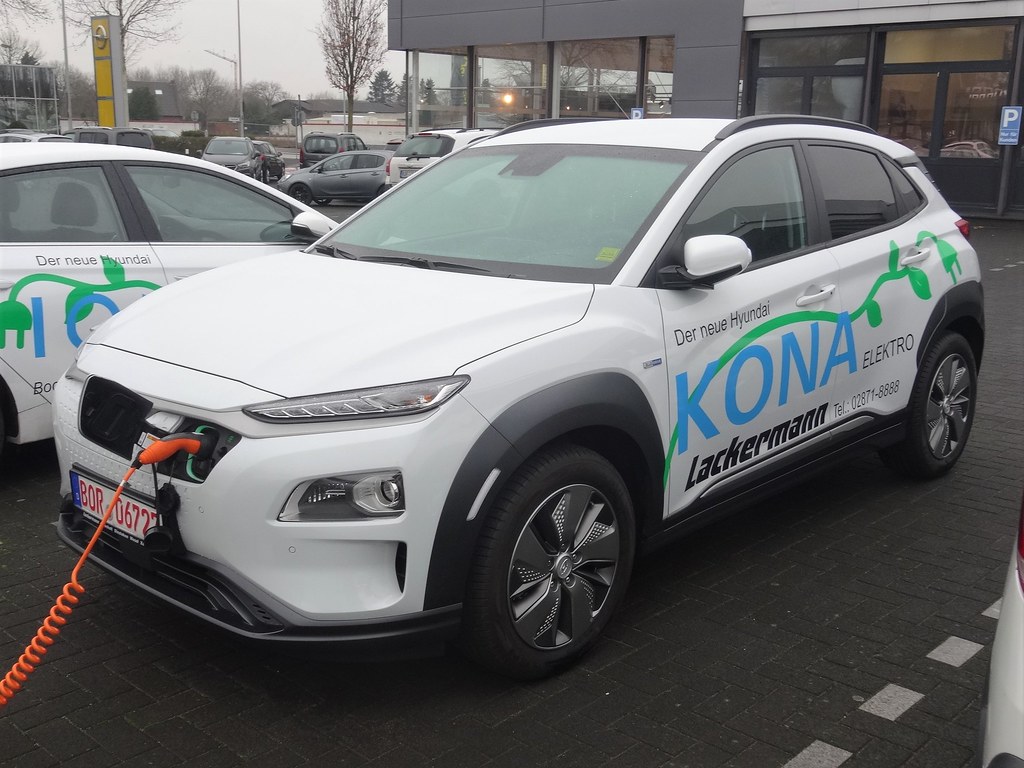
2. **Hyundai Kona Electric**Hydunai has really been making waves with some interesting and generally well-received electric vehicles lately, showing impressive innovation in the EV space. Yet, even the best brands can have their missteps, and unfortunately, the Hyundai Kona Electric stands out as a “clunker” in their lineup. Much like its Chevrolet counterpart, the Kona Electric has a rather unfortunate history marked by battery fires and extensive recalls.
This wasn’t just a localized problem; the carmaker issued a worldwide recall in both 2020 and 2021, a clear indication of the seriousness and widespread nature of the issue. The goal was to nip those fire risks in the bud by replacing battery packs in affected EVs, a necessary but costly and inconvenient fix for owners. It highlights a critical flaw that put both vehicles and their occupants at risk.
However, it turns out that the battery issues, as significant as they were, were merely the tip of the iceberg for many Kona Electric owners. The context implies that there were other problems simmering beneath the surface, making the overall ownership experience far from ideal. While specific details of these other issues aren’t laid out, the warning “Buyer beware!” strongly suggests that the Kona Electric’s challenges extend beyond just its power source.
For those who bought into the early promise of an affordable and stylish electric SUV, the reality of recalls and other undisclosed problems proved to be a bitter pill to swallow. It serves as a stark reminder that even innovative vehicles from reputable brands can sometimes disappoint, leaving owners with that all-too-familiar feeling of regret.
Car Model Information: 2022 Volkswagen Atlas 2.0T SE
Name: Hyundai Kona
Caption: Hyundai Kona N Line (SX2)
Manufacturer: Hyundai Motor Company
Aka: Hyundai Kauai (Portugal)
Production: 2017–present
ModelYears: 2018–present
Class: Subcompact crossover SUV
BodyStyle: SUV
Layout: ubl
Categories: 2020s cars, All-wheel-drive vehicles, All Wikipedia articles in need of updating, Articles containing Chinese-language text, Articles containing Korean-language text
Summary: The Hyundai Kona is a subcompact crossover SUV produced by the South Korean manufacturer Hyundai. The first-generation Kona debuted in June 2017 and the production version was revealed later that year. It is positioned between the Venue or Bayon and the Tucson in Hyundai crossover SUV line-up. The battery electric version called the Kona Electric (or Kona EV) was first launched in South Korea during the first half of 2018 and rolled out gradually worldwide afterwards.
Get more information about: Hyundai Kona
Buying a high-performing used car >>>
Brand: Hyundai Model: Kona Electric
Price: $21,999 Mileage: 44,961 mi.
Read more about: 10 SUVs That Hit 40 MPG Highway—And They’re Not Even Hybrids
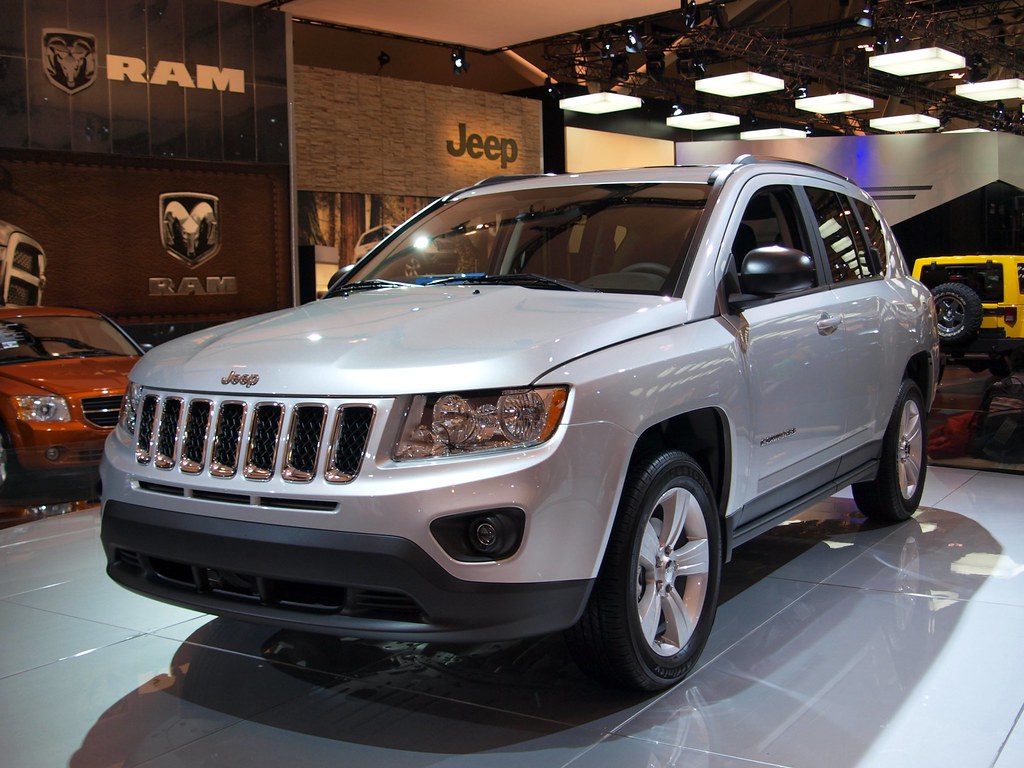
3. **Jeep Compass**Ah, the Jeep Compass – a compact SUV that, for many owners, became less of an adventure companion and more of a constant source of headaches. While Jeeps are synonymous with rugged capability and off-road prowess, certain model years of the Compass have been plagued with some truly serious issues. If you’re looking to avoid a “migraine headache on wheels,” the general consensus from a frustrated ownership base is to steer clear of this particular SUV.
One of the most common and exasperating complaints from owners revolves around the vehicle’s transmissions. Both the continuously variable transmission (CVT) and the 9-speed automatic transmissions in various model years have been notorious for experiencing “herky-jerky shifting.” This isn’t just an annoyance; it points to a lack of refinement and can make for a very uncomfortable, not to mention unreliable, driving experience. Worse still, these transmissions have been known to suffer catastrophic failure, leaving owners stranded and facing hefty repair bills.
But the transmission troubles are just one piece of the problematic puzzle. Owners also frequently report poor engine performance, which can lead to a lack of power and responsiveness, taking the fun out of driving. Excessive oil consumption is another recurring issue, forcing owners to constantly monitor and top off their oil levels, which is far from ideal. Add to that a plethora of electrical system issues, and you have a vehicle that consistently struggles with basic functionality.
These combined problems paint a clear picture of a vehicle that simply doesn’t deliver on the reliability and quality expected from a modern SUV. For many Jeep Compass owners, the allure of the badge quickly faded once they experienced the persistent and costly frustrations that came with daily ownership. It’s a vehicle that, for many, turned the dream of a capable SUV into a regrettable reality.
Car Model Information: 2021 Jeep Wrangler Unlimited Sport
Name: Jeep Compass
Caption: 2019 Jeep Compass
Manufacturer: Jeep
Production: 2006–present
ModelYears: 2007–present
Class: Compact crossover SUV
BodyStyle: SUV
Layout: Front-engine, front-wheel-drive layout
Chassis: Unibody
Categories: 2010s cars, 2020s cars, All-wheel-drive vehicles, All Wikipedia articles written in American English, Articles with short description
Summary: The Jeep Compass is a compact crossover SUV, introduced in 2006 for the 2007 model year. The first generation Compass and Patriot, its rebadged variant, were among Jeep’s first crossover SUVs. The second-generation Compass debuted in September 2016 in Brazil and at the Los Angeles International Auto Show in November 2016, sharing a modified platform with the Renegade. It is positioned between the smaller Renegade and the larger Cherokee globally or the Commander in South America. The third-generation Compass debuted in May 2025, built on the STLA Medium by Stellantis, shared with other PSA Groupe vehicles.
Get more information about: Jeep Compass
Buying a high-performing used car >>>
Brand: Jeep Model: Compass
Price: $26,990 Mileage: 56,429 mi.
Read more about: Steer Clear: 15 Vehicles Drivers Have Regretted Purchasing Most
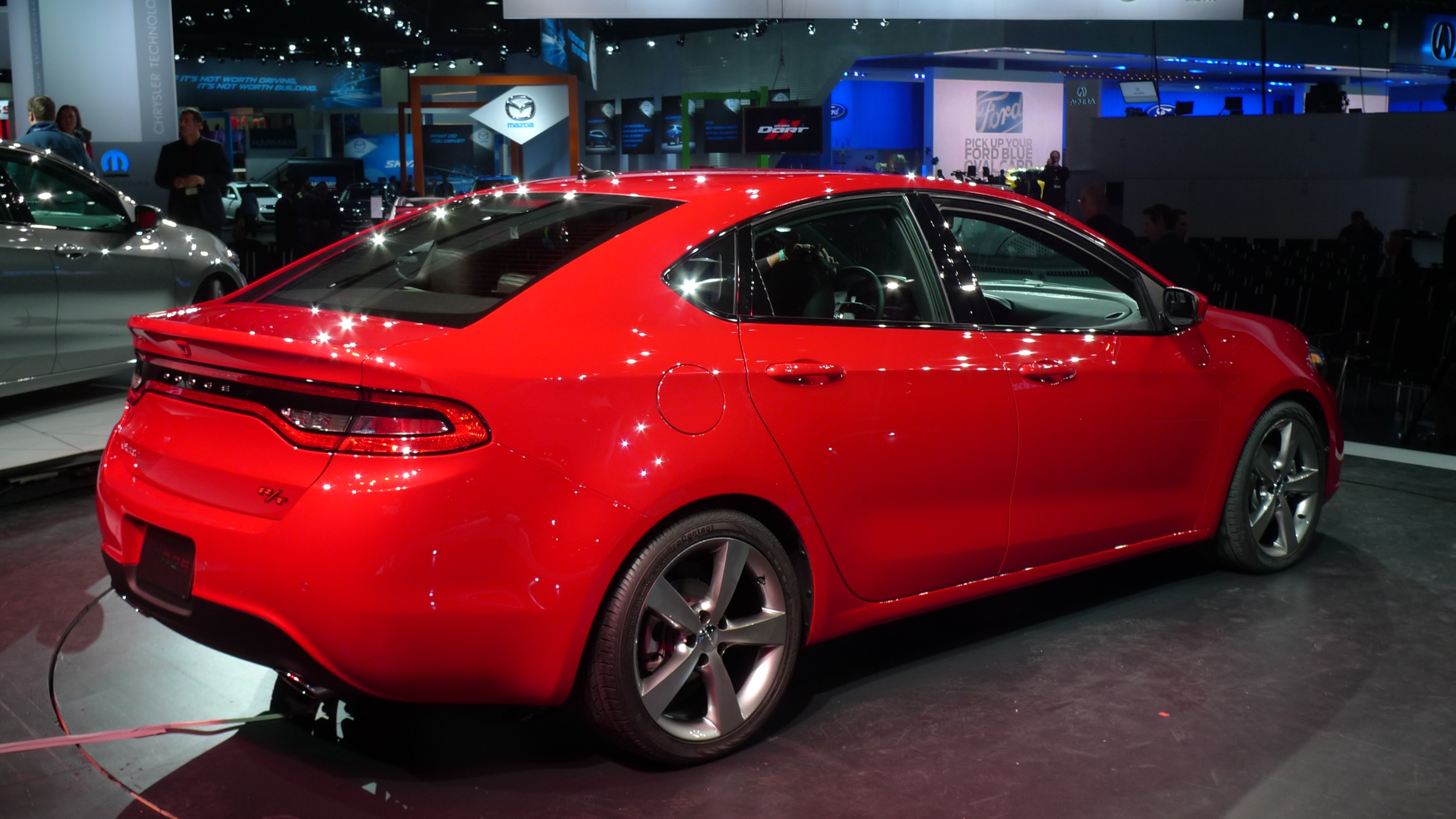
4. **Dodge Dart**The Dodge Dart, a compact sedan, had an ambitious re-entry into the market, aiming to capture the hearts of drivers looking for an affordable yet stylish option. However, what it delivered instead were “full-size car problems” in a compact package, leading to widespread buyer’s remorse. For many owners, figuring out where to even begin listing the issues with the Dodge Dart proved to be a challenge in itself, simply because the problems seemed to touch almost every aspect of the vehicle.
From the critical components like the transmission and the engine, to the foundational elements of the suspension and the crucial safety features of the brakes, the Dodge Dart left a trail of unhappy owners. The sheer breadth of these issues meant that it wasn’t just one isolated flaw, but rather a systemic lack of reliability that permeated the entire vehicle. This kind of comprehensive failure is a surefire recipe for regret.
Just how widespread was this dissatisfaction? According to insights from Consumer Reports, a staggering “around six in 10 buyers” reported that they were not satisfied with the vehicle. That’s a truly damning statistic, indicating that a significant majority of those who purchased a Dodge Dart ultimately wished they had never made that choice. It’s a clear signal that the car, despite its marketing, simply failed to meet basic expectations for quality and performance.
This high level of buyer dissatisfaction underscores the fact that the Dodge Dart, despite its aspirations, fell short in delivering a reliable and enjoyable ownership experience. For those looking for a dependable compact sedan, the Dart proved to be a costly lesson in automotive disappointment, reinforcing why so many owners would gladly undo their purchase if given the chance.
Car Model Information: 2013 Dodge Dart Limited/GT
Name: Dodge Dart
Caption: 1966 Dodge Dart GT 2-door hardtop
Manufacturer: Dodge
Production: 1959–1976 (US market)
ModelYears: 1960–1976 (US market)
Class: Full-size
Layout: FR layout
Predecessor: Dodge Coronet#Fourth generation (1957–1959)
Related: Plymouth Valiant,Chrysler Valiant,Dodge Phoenix
Successor: Dodge Aspen,Dodge Diplomat,Talbot Tagora
Categories: 1970s cars, All articles with unsourced statements, Articles with short description, Articles with unsourced statements from December 2023, Articles with unsourced statements from May 2025
Summary: The Dodge Dart is a line of passenger cars produced by Dodge from the 1959 to 1976 model years in North America, with production extended to later years in various other markets.
The production Dodge Dart was introduced as a lower-priced full-size model in 1960 and 1961, but became a mid-size car for one model year for 1962, and was then reduced to a compact for two generations, from 1963 to 1976.
Chrysler had first used ‘Dart’ name plates on two Italian styled show cars, in 1956 and 1957, before it became a Dodge model name. The Dart nameplate was resurrected for a Fiat-derived compact car that was introduced in 2012.
Get more information about: Dodge Dart
Buying a high-performing used car >>>
Brand: Dodge Model: Dart
Price: $6,971 Mileage: 123,411 mi.
Read more about: Steer Clear: 15 Vehicles Drivers Have Regretted Purchasing Most
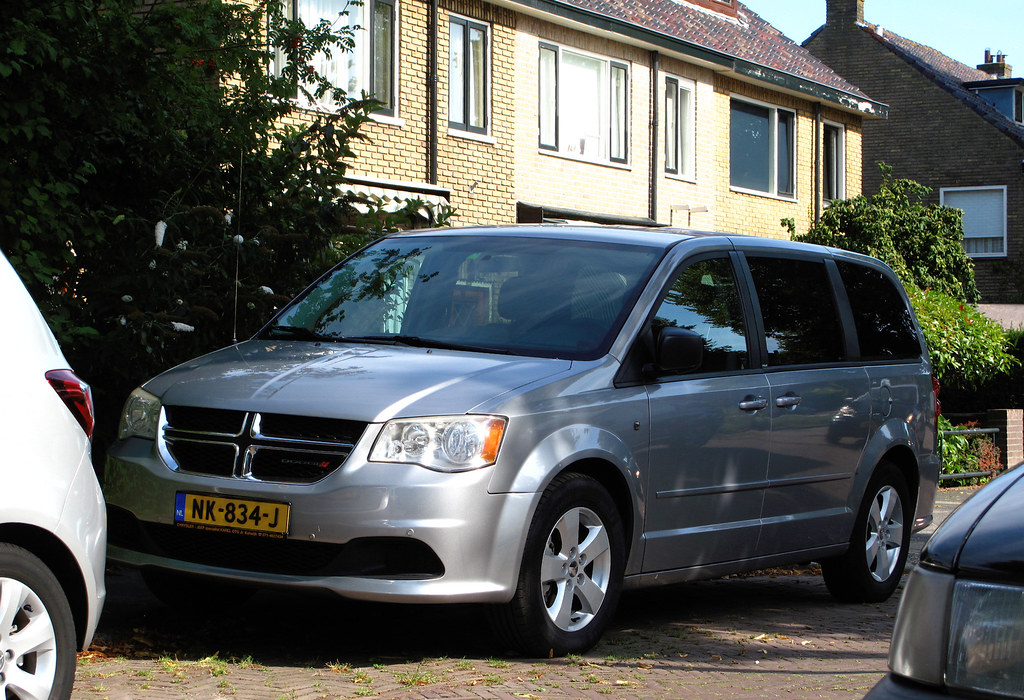
5. **Dodge Grand Caravan**For many families across America, the Dodge Grand Caravan holds a unique place in their collective memory – some fond, some perhaps less so – as a vehicle for countless road trips, school runs, and hauling duties. While it has served as a utilitarian family chariot for decades, the reality for many owners is that these minivans are anything but a “smooth driving” experience, especially over the long haul. Reliability, particularly regarding its transmission, became a constant point of contention.
It’s incredibly challenging to rely on a Dodge Grand Caravan as your primary family, pet, and “thing hauler” when transmission failure is an alarmingly common complaint from owners. This isn’t just about an occasional breakdown; it’s a recurring issue that undermines the very purpose of a family vehicle designed for dependable transport. The thought of a transmission giving out while on a family vacation is enough to send shivers down any parent’s spine.
And often, these critical transmission failures don’t just happen out of the blue. Many owners report experiencing a series of warning signs leading up to the final demise. These pre-failure issues can include frustrating occurrences like “delayed gear engagement,” where the minivan hesitates before shifting, “rough shifting” that makes every gear change a jarring experience, and even “slipping” gears, which can be both dangerous and indicative of impending doom. These problems make for a stressful and uncomfortable daily drive, not to mention a safety concern.
Beyond the transmission woes, many owners also complain about persistent electrical system problems, which can manifest in a myriad of frustrating ways, from power windows failing to infotainment glitches. Heavy oil consumption is another common grievance, adding to the maintenance burden and cost. Given these widespread and significant issues, it’s no wonder that if they “could rewind time and have a do-over, they would gladly choose something else.” The Grand Caravan, for all its potential as a family workhorse, often became a source of major regret.
Car Model Information: 2022 Volkswagen Atlas 2.0T SE
Caption: 2011 Dodge Grand Caravan Mainstreet
Name: Dodge Grand Caravan
Manufacturer: Chrysler Corporation,Daimler AG,Chrysler LLC,Chrysler Group LLC,FCA US LLC
Class: Minivan
Layout: FF layout,F4 layout
Production: November 2, 1983 –August 21, 2020
ModelYears: 1984–2020
Related: Plymouth Voyager,Chrysler Town & Country (minivan),Dodge Mini Ram,Chrysler Voyager,Volkswagen Routan
Assembly: Windsor, Ontario,Fenton, Missouri,Fenton, Missouri,Fuzhou
Successor: Dodge Journey,Chrysler Voyager
Categories: All-wheel-drive vehicles, All articles with unsourced statements, Articles with short description, Articles with unsourced statements from December 2017, Articles with unsourced statements from May 2009
Summary: The Dodge Caravan is a series of minivans manufactured by Chrysler from the 1984 through 2020 model years. The Dodge version of the Chrysler minivans, was marketed as both a passenger van and a cargo van (the only version of the model line offered in the latter configuration). For 1987, the model line was joined by the long-wheelbase Dodge Grand Caravan. Produced in five generations across 36 model years, the Dodge Caravan is the second longest-lived Dodge nameplate (exceeded only by the Dodge Charger). Initially marketed as the Dodge counterpart of the Plymouth Voyager, the Caravan was later slotted between the Voyager and the Chrysler Town & Country. Following the demise of Plymouth, the model line became the lowest-price Chrysler minivan, ultimately slotted below the Chrysler Pacifica.
Sold primarily in the United States and Canada, the Dodge Caravan was also marketed in Europe and other international markets under the Chrysler brand (as the Chrysler Voyager or Chrysler Caravan). From 2008 onward, Dodge marketed the model line only as the Grand Caravan; Ram Trucks sold a cargo-only version of the model line as the Ram C/V Tradesman. The model line was also rebranded as the Volkswagen Routan from 2009 through 2014.
After the 2020 model year, the Dodge Grand Caravan was discontinued, ending production on August 21, 2020. For 2021 production, the Grand Caravan nameplate was moved to Chrysler, which used it for a Canadian-market version of the Chrysler Pacifica (in the United States, the exact vehicle was marketed as the Chrysler Voyager).
For its entire production run, the Dodge Caravan/Grand Caravan was manufactured by Chrysler Canada (now Stellantis Canada) at its Windsor Assembly facility (Windsor, Ontario). From 1987 until 2007, the model line was also manufactured by Chrysler at its Saint Louis Assembly facility (Fenton, Missouri). Since their introduction in late 1983, over 14.6 million Chrysler minivans have been sold worldwide (including export versions and versions sold through rebranding).
Get more information about: Dodge Caravan
Buying a high-performing used car >>>
Brand: Dodge Model: Grand Caravan
Price: $21,999 Mileage: 44,961 mi.
Read more about: Steer Clear: 15 Vehicles Drivers Have Regretted Purchasing Most

6. **Nissan Sentra**The Nissan Sentra has been a staple in the compact car segment for years, with a reputation for being an economical and practical choice. And while, like most vehicles, there are indeed some good model years that served owners well, there are certain periods when the Sentra was, quite frankly, “horrific.” Specifically, potential buyers are strongly advised to “stay away from the ones made from 2013 to 2019” if they want to avoid a world of automotive pain and regret.
The primary culprit behind the Sentra’s downfall during these years was its infamous continuously variable transmission, or CVT. This transmission technology, designed to offer smooth acceleration and improved fuel economy, became a major “thorn in the side of many Sentra owners” instead. The issues were widespread and varied, ranging from the transmission overheating, which can lead to serious damage, to experiencing “jerky acceleration” and an unsettling “shuddering” sensation during driving. These aren’t just minor quirks; they fundamentally degrade the driving experience and raise concerns about the vehicle’s longevity.
But the CVT problems, as significant as they were, weren’t the only items on the laundry list of issues for these Sentra model years. Owners also reported instances of the “engine stalling,” a potentially dangerous and certainly frustrating problem that can happen at the most inconvenient times. Furthermore, these vehicles were subject to “many recalls” related to critical safety components such as the airbags, seatbelts, brakes, and more. This combination of major mechanical flaws and safety concerns painted a clear picture of a vehicle that was simply not living up to basic reliability standards.
For many who purchased a Nissan Sentra from this problematic era, the initial promise of an affordable and dependable compact car quickly dissolved into a series of expensive repairs, stressful driving experiences, and a profound sense of buyer’s remorse. It’s a stark reminder that even a popular nameplate can suffer from significant quality control issues, leaving a lasting negative impression on its owners.
Car Model Information: 2019 Nissan Sentra SV
Name: Nissan Sentra
Caption: 2021 Nissan Sentra SR (B18; Canada)
Manufacturer: Nissan
Aka: Nissan Sunny
Production: 1982–present
Class: Subcompact car
Predecessor: Nissan Sunny#B310
Categories: 1990s cars, 2000s cars, 2010s cars, 2020s cars, All Wikipedia articles written in American English
Summary: The Nissan Sentra is a series of automobiles manufactured by the Japanese automaker Nissan since 1982. Since 1999, the Sentra has been categorized as a compact car, while previously it occupied the subcompact class. Until 2006, Sentra was a rebadged export version of the Japanese Nissan Sunny, but since the 2013 model year, Sentra is a rebadged export version of the Sylphy. The Sentra nameplate is not used in Japan. Many other countries in Latin America sell their versions of the Sunny as the Sentra. In Mexico, the first three generations of the Sentra were known as the Nissan Tsuru (Japanese for crane), and the B13 model was sold under that name until 2017, alongside the updated models badged as Sentra.
In North America, the Sentra currently serves as Nissan’s compact car, despite being rated as a mid-size car by the EPA due to its interior volume since the 2007 model year. While previous Sentras were subcompacts, the Sentra has grown over the years, with the Nissan Versa having replaced the Sentra in the entry-level area.
The Sentra name was created for Nissan by Ira Bachrach of NameLab, and Bachrach describes the origin as “Nissan wanted consumers to understand that it was quite safe even though it was small. The word Sentra sounds like central as well as sentry, which evokes images of safety.”
Get more information about: Nissan Sentra
Buying a high-performing used car >>>
Brand: Nissan Model: Sentra
Price: $11,000 Mileage: 128,544 mi.
Read more about: Steer Clear: 15 Vehicles Drivers Have Regretted Purchasing Most
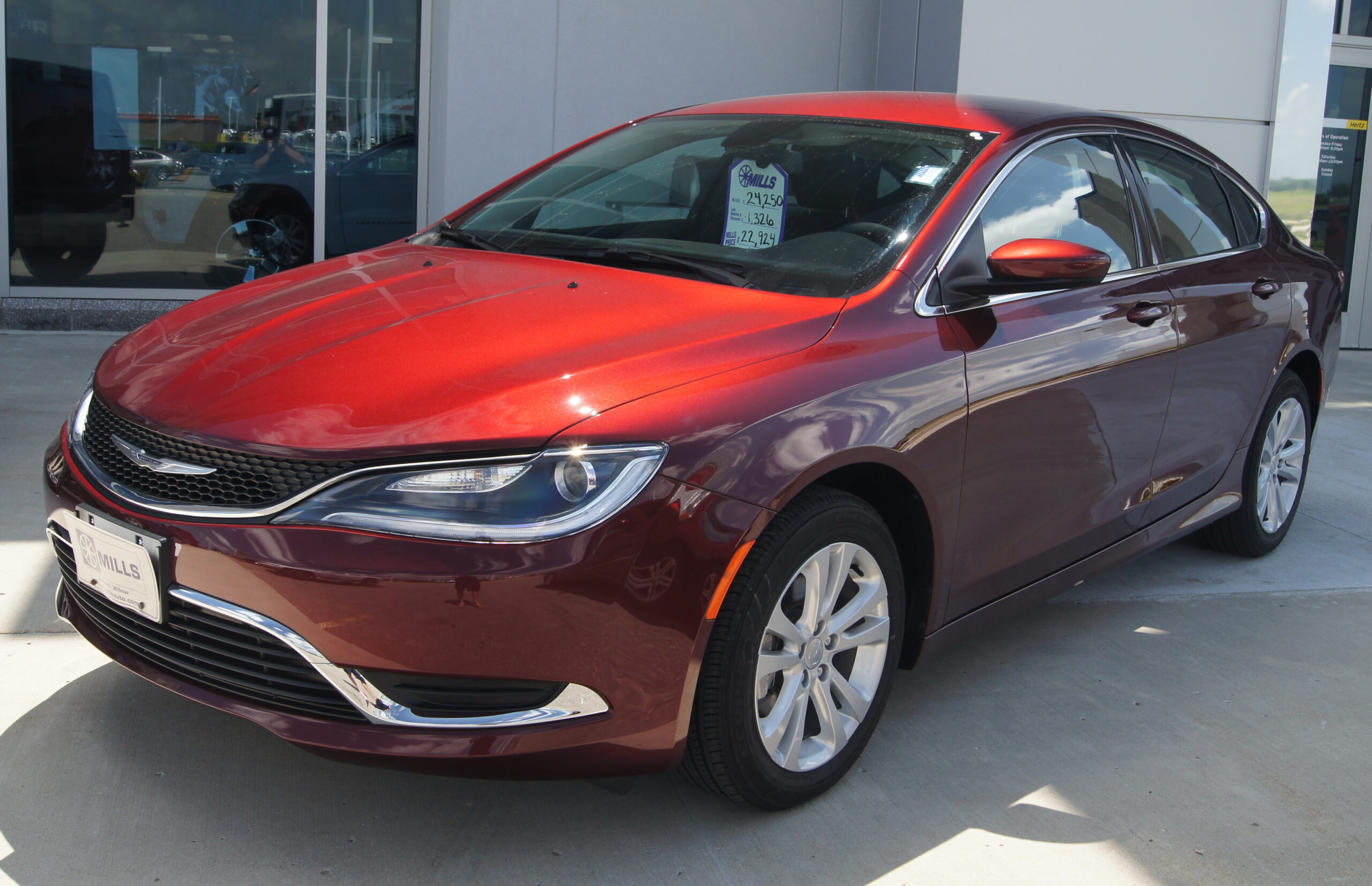
7. **Chrysler 200**The Chrysler 200, produced between 2011 and 2017, was Chrysler’s attempt to offer a competitive mid-size sedan, but it ultimately became another vehicle that left a significant number of owners grappling with regret. The car was unfortunately burdened with “many reliability issues” throughout its production run, making it a frequent visitor to service bays rather than the open road. These issues were not minor; they often struck at the core functionality of the vehicle.
Among the most glaring problems, owners of the 2015, 2016, and 2017 models found the 9-speed automatic transmission to be “especially problematic.” This particular transmission, designed for efficiency and smooth shifts, instead delivered frustration and a lack of dependability. For many, issues with this transmission were “just for starters,” indicating that once one problem surfaced, others often followed in quick succession. The ultimate fear for many owners, “transmission failure,” was indeed a very real and often realized outcome.
Imagine the financial strain and inconvenience of facing a transmission replacement or major repair shortly after purchasing a relatively new car. It’s precisely this kind of costly and premature failure that triggers intense buyer’s remorse. Beyond the transmission, the Chrysler 200 also “suffers from engine performance problems,” meaning it didn’t just struggle to shift gears, but sometimes even lacked the fundamental power and responsiveness expected from a daily driver.
This combination of significant transmission and engine troubles made the Chrysler 200 a car many owners wished they had never purchased. The promise of an American-made sedan with modern features quickly gave way to the harsh reality of persistent mechanical woes, solidifying its place on the list of regrettable car purchases. For those who owned it, the 200 often symbolized a triumph of hope over experience, a hope that was ultimately dashed by its unreliable nature.
Car Model Information: 2015 Chrysler 200 S
Name: Chrysler 200
Manufacturer: Chrysler
Production: 2010–2016
ModelYears: 2011–2017
Assembly: Sterling Heights, Michigan
Class: Mid-size car
Sp: us
Predecessor: Chrysler Sebring
Categories: 2010s cars, All articles with dead external links, All articles with unsourced statements, Articles with dead external links from July 2020, Articles with permanently dead external links
Summary: The Chrysler 200 is a mid-size sedan that was manufactured and marketed by Chrysler from model years 2011 to 2017 across two generations in four-door sedan and two-door convertible (first generation only) body styles.
The 200 nameplate debuted on the 200C, a prototype hybrid vehicle shown at the 2009 North American International Auto Show in Detroit and based on the Chrysler 300. The 200C concept was engineered to accept either traditional gasoline, hybrid or full-electric powertrains.
Get more information about: Chrysler 200
Buying a high-performing used car >>>
Brand: Chrysler Model: 200
Price: $6,900 Mileage: 122,275 mi.
Read more about: Steer Clear: 15 Vehicles Drivers Have Regretted Purchasing Most
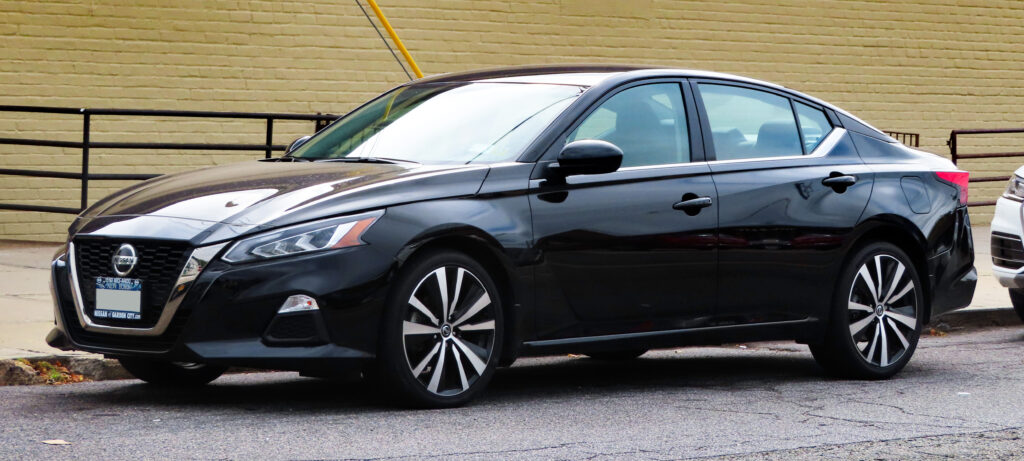
8. **Nissan Altima**The Nissan Altima often makes its way onto the list of cars owners wish they’d skipped, primarily thanks to a familiar culprit: its continuously variable transmission (CVT). Drivers of models from 2013 to 2019, in particular, found themselves wrestling with a transmission that was more of a problem than a perk, turning everyday commutes into frustrating experiences.
The CVT, designed for smooth efficiency, instead delivered a range of headaches including unsettling shuddering, noticeable whining noises, and in many unfortunate cases, premature failure. It’s hard to enjoy your ride when the very system meant to propel you forward is constantly acting up, leading to a profound sense of buyer’s remorse for many.
Beyond the transmission troubles, the Altima also suffered from steering issues that left drivers feeling disconnected from the road. Add to that persistent complaints about excessive oil consumption and leaks, and you have a sedan that, despite its initial promise, often became a costly and inconvenient burden for its owners.
Car Model Information: 2024 Nissan Altima 2.5 SL
Name: Nissan Altima
Caption: 2024 Nissan Altima SR (L34; US)
Manufacturer: Nissan
Aka: Nissan Bluebird
Production: 1992–present
Class: Compact car
Predecessor: Nissan Bluebird,Nissan Stanza
ModelYears: 1993–present
Categories: 2000s cars, 2010s cars, 2020s cars, All-wheel-drive vehicles, All Wikipedia articles written in American English
Summary: The Nissan Altima is a mid-size car manufactured by Nissan since 1992. It is a continuation of the Nissan Bluebird line, which began in 1955.
The Altima has historically been larger, more powerful, and more luxurious than the Nissan Sentra but less so than the Nissan Maxima. The first through fourth-generation cars were manufactured exclusively in the United States and officially sold in North and South America, along with the Middle East and Australia. For other markets, Nissan sold a related mid-size sedan called the Nissan Teana which was between the Altima and Maxima in terms of size. In 2013, the Teana became a rebadged version of the fifth-generation Altima.
The name “Altima” was originally applied to a top trim line of the Nissan Leopard for the Japanese market in 1986, and then to the Nissan Laurel Altima mid-size car sold in Central America and the Caribbean before 1992. In 1992, Nissan discontinued the Stanza which was a Nissan Bluebird clone, replacing it with the US-built Altima, while remaining a compact car. The first Altima was produced in June 1992, as a 1993 model. All Altima models for the North American market were built in Smyrna, Tennessee, until June 2004, when Nissan’s Canton, Mississippi plant also began producing the model to meet high demand.
Get more information about: Nissan Altima
Buying a high-performing used car >>>
Brand: Nissan Model: Altima
Price: $23,998 Mileage: 34,897 mi.
Read more about: Steer Clear: 15 Vehicles Drivers Have Regretted Purchasing Most
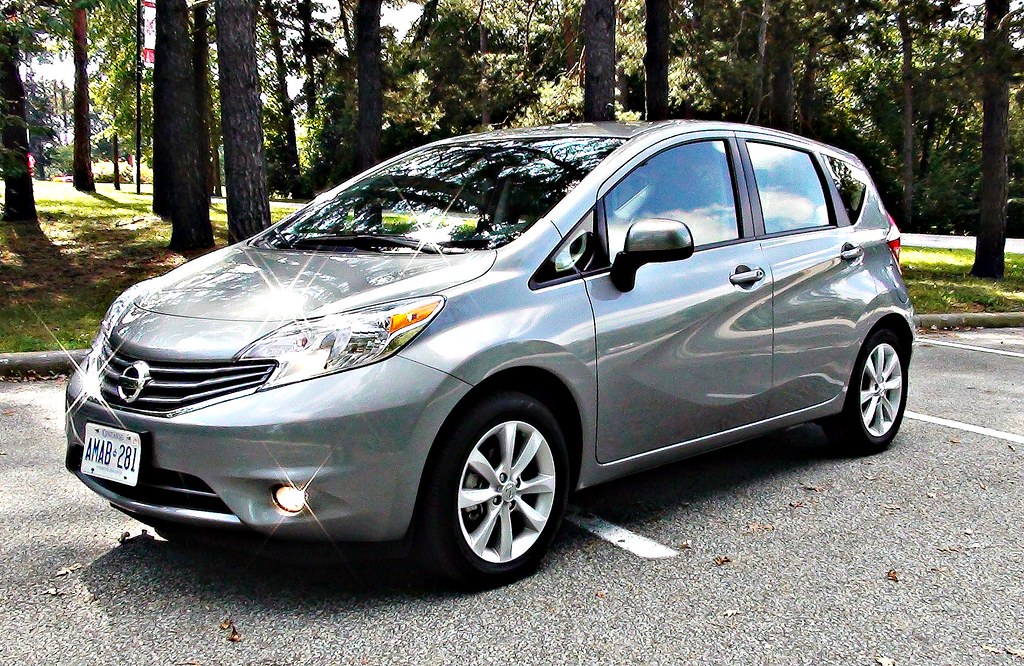
9. **Nissan Versa Note**If you were drawn to the Nissan Versa Note by its “super-cheap” price tag, you might have quickly learned that sometimes, you truly get what you pay for. This small hatchback, while economical upfront, delivered a frustrating ownership experience that often mirrored its low cost, particularly due to its continuously variable transmission (CVT).
The CVT in the Versa Note was a constant source of exasperation for owners, completely undermining any appeal its affordability might have offered. Instead of seamless power, drivers often reported noticeable performance issues that degraded the driving experience and raised concerns about the car’s long-term reliability.
Compounding these transmission woes was the car’s “anemic acceleration” from its 1.6-liter 4-cylinder engine. For those seeking even a modicum of responsiveness, the Versa Note fell short, leaving many buyers feeling that the initial savings simply weren’t worth the daily frustrations.
Car Model Information: 2022 Volkswagen Atlas 2.0T SE
Name: Nissan Note
Manufacturer: Nissan
Production: 2004–present
Class: Mini MPV
BodyStyle: hatchback
Layout: Front-engine, front-wheel-drive layout,Front-engine, four-wheel-drive layout
Predecessor: Nissan Almera Tino
Aka: Nissan Versa
Caption: Nissan Note (E13)
Categories: 2010s cars, 2020s cars, All-wheel-drive vehicles, All articles containing potentially dated statements, All articles needing rewrite
Summary: The Nissan Note is a supermini/subcompact hatchback or a mini MPV manufactured and marketed globally by Nissan. Introduced in 2004, the first-generation Note was primarily marketed in Japan and Europe, and was produced in Japan and the United Kingdom. The second-generation model was sold in other regions, including North America where it was manufactured in Mexico and marketed as the Versa Note, and Thailand, where it serves as one of the B-segment hatchback offered by the brand alongside the smaller March/Micra under the Eco Car tax scheme. In 2017, the second-generation Note was replaced by the French-built K14 Micra for the European market. The Versa Note was discontinued in North America in 2019 due to the decreasing demand for subcompact hatchbacks in the region. It continued to be produced and sold in Japan up to the introduction of the third-generation Note in late 2020. The Note was introduced with a series hybrid drivetrain in late 2016 as the Note e-Power. Due to its popularity and the push of electrification, the third-generation Note is only available with the e-Power drivetrain, with a WLTC fuel economy of 29.5 kilometres per litre (69 mpg‑US).
Get more information about: Nissan Note
Buying a high-performing used car >>>
Brand: Nissan Model: Versa Note
Price: $21,999 Mileage: 44,961 mi.
Read more about: 10 SUVs That Hit 40 MPG Highway—And They’re Not Even Hybrids
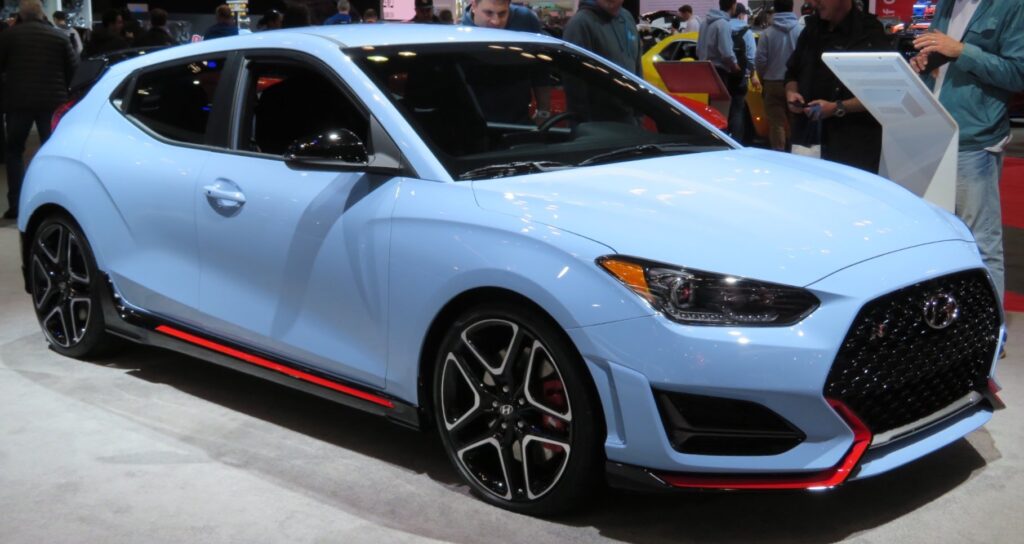
10. **Hyundai Veloster**The Hyundai Veloster certainly turns heads with its “cool-looking” and distinctive three-door styling, plus its promise of responsive handling. It appears to be a fun, sporty choice, but many owners have quickly discovered that the vehicle’s underlying problems are simply “hard to ignore,” transforming initial excitement into deep-seated regret.
The Hyundai Veloster certainly turns heads with its “cool-looking” and distinctive three-door styling, plus its promise of responsive handling. It appears to be a fun, sporty choice, but many owners have quickly discovered that the vehicle’s underlying problems are simply “hard to ignore,” transforming initial excitement into deep-seated regret.
A major concern for the Veloster lies in its engine issues, which have been known to lead to “catastrophic failure.” This isn’t a minor glitch; it’s a critical flaw that can result in massive repair bills and leave owners stranded, completely overshadowing any positive driving impressions.
Furthermore, the dual-clutch transmission has its own set of issues, including “delayed acceleration,” “slipping,” and “jerky shifts,” making for an unpredictable drive. Add to this reported suspension and steering problems, and the Veloster becomes a car that, for many, was a regrettable purchase despite its unique aesthetics.
Car Model Information: 2013 Hyundai Veloster Turbo
Name: Hyundai Veloster
Manufacturer: Hyundai Motor Company
Production: 2011–2022
Class: Sport compact car
Layout: Front-engine, front-wheel-drive layout
BodyStyle: hatchback
Predecessor: Hyundai Tiburon
ModelYears: 2012–2022
Assembly: Ulsan
Categories: All Wikipedia articles in need of updating, All articles with unsourced statements, Articles containing Korean-language text, Articles with short description, Articles with unsourced statements from May 2018
Summary: The Hyundai Veloster is a compact car first produced in 2011 by Hyundai, with sales beginning in South Korea on March 10, 2011, and in Canada and the United States since the fall of 2011. In South Korea, it was marketed under Hyundai’s ‘Premium Youth Lab’. It was unveiled on January 10, 2011, at the Detroit Auto Show, and fills the void left when Hyundai discontinued the Hyundai Tiburon after the 2008 model year. The car differs from most other hatchbacks with its asymmetrical door configuration, featuring one large door on the driver side and two smaller doors on the passenger side. This configuration is more common on commercial vehicles and minivans.
Get more information about: Hyundai Veloster
Buying a high-performing used car >>>
Brand: Hyundai Model: Veloster
Price: $10,000 Mileage: 56,000 mi.
Read more about: Steer Clear: 15 Vehicles Drivers Have Regretted Purchasing Most
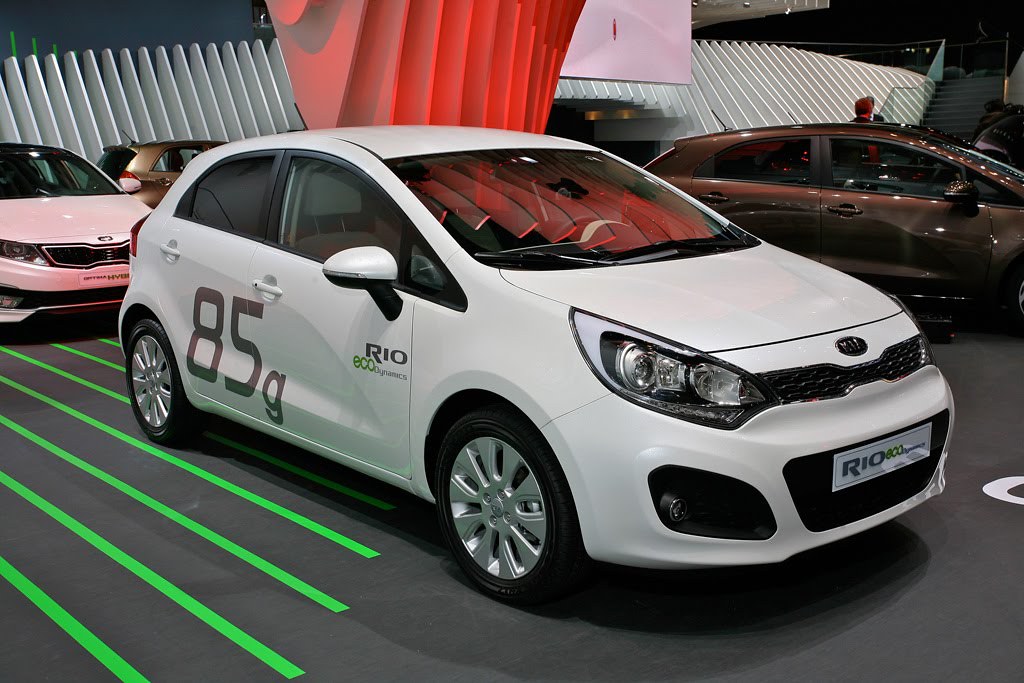
11. **Kia Rio**The Kia Rio aims to be an affordable and efficient compact car, but for many owners, this promise came with a heavy dose of buyer’s remorse. It seems the vehicle is “just as well known for its engine issues” as it is for its budget-friendly price, making the initial savings feel less like a win and more like a trade-off for persistent problems.
Common engine complaints include “rough idling and misfires,” often traceable to issues with spark plugs or ignition coils. These problems don’t just affect performance; they can lead to increased fuel consumption and the constant worry of potential breakdowns, undermining the very efficiency the car is supposed to offer.
Beyond the mechanical frustrations, owners also frequently “complain about the cheap interior quality and comfort issues.” While an affordable price is appealing, a car that feels subpar inside and lacks comfort for daily commutes can quickly become a source of irritation, leading to a swift onset of regret.
Car Model Information: 2023 Kia Rio S
Name: Kia Rio
Caption: Fourth generation Kia Rio
Manufacturer: Kia
Aka: Kia Pride (2005–2017),Kia K2 (China; 2011–2020)
Production: November 1999 – December 2023
ModelYears: 2001–2023 (North America)
BodyStyle: hatchback
Class: Subcompact car
Layout: Front-engine, front-wheel-drive layout
Predecessor: Kia Pride,Kia Avella
Successor: Kia K3 (BL7)
Categories: 2000s cars, 2010s cars, Articles containing Korean-language text, Articles with short description, CS1 Croatian-language sources (hr)
Summary: The Kia Rio is a subcompact car manufactured by Kia from 1999 to 2023. Body styles have included a three and five-door hatchback and four-door sedan, equipped with inline-four gasoline and diesel engines, and front-wheel drive. The Rio replaced the first generation Pride—a rebadged version of the Ford Festiva—and the Avella, a subcompact sold as a Ford in some markets. A second generation was introduced in 2005 in Europe and in 2006 in North America, sharing its platform with the Hyundai Accent, a subcompact manufactured by its sister Hyundai Motor Company in South Korea. In August 2023, the K3 was introduced as its successor in several markets such as Mexico and the GCC countries.
Get more information about: Kia Rio
Buying a high-performing used car >>>
Brand: Kia Model: Rio
Price: $16,949 Mileage: 22,509 mi.
Read more about: Top 7 Cars Under $40,000: Value, Performance, and Advanced Safety Features for Savvy Buyers
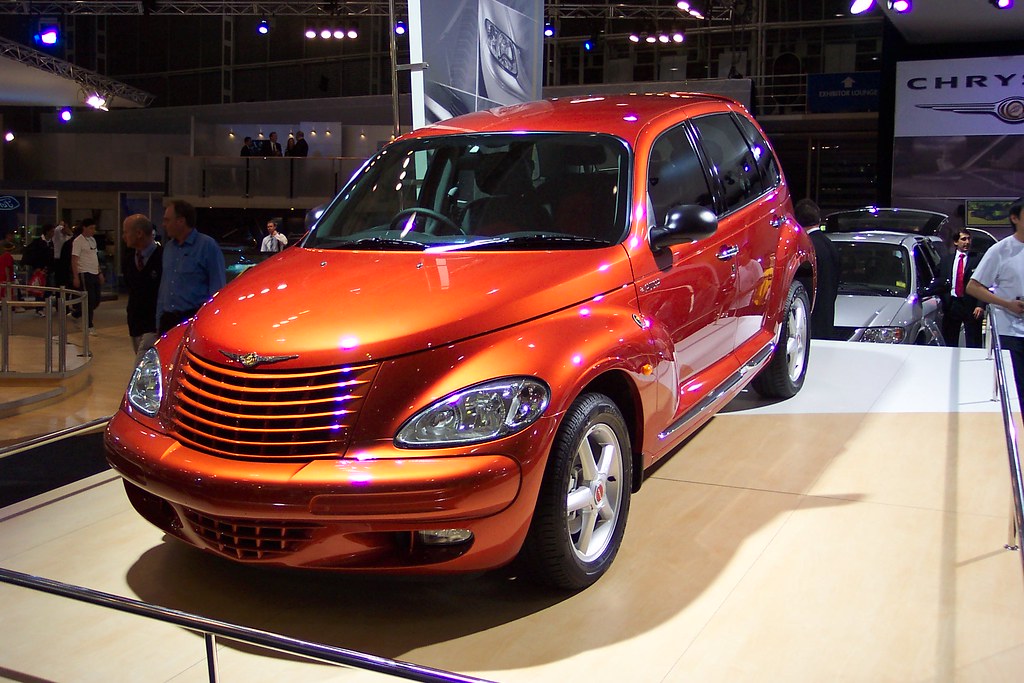
12. **Chrysler PT Cruiser**The Chrysler PT Cruiser is one of those cars with a truly polarizing “retro style” – people either “love or hate” its distinctive look. However, for many owners, the car’s aesthetics became secondary to a long list of pervasive mechanical failures that made it a constant source of frustration and regret.
Underneath its unique exterior, the PT Cruiser was plagued with “engine issues galore.” These ranged from inexplicable stalling and rough idling to serious overheating problems and even critical head gasket failure. Such significant flaws transformed the dream of owning a stylish, compact car into a nightmare of constant repairs and unreliability.
Compounding the engine troubles, the PT Cruiser also suffered from persistent “transmission and electrical problems, among other things.” This comprehensive litany of issues meant that owning a PT Cruiser often felt like a perpetual visit to the service bay, solidifying its place as a vehicle many owners wished they had never purchased.
Car Model Information: 2022 Volkswagen Atlas 2.0T SE
Name: Chrysler PT Cruiser
Manufacturer: Chrysler
ModelCode: PT,PG
Production: 2000–2010
ModelYears: 2001–2010
Assembly: Toluca, Mexico State
Designer: Bryan Nesbitt
Class: Compact car
BodyStyle: convertible
Platform: Chrysler PT platform
Related: Dodge SRT4,Dodge Neon
Predecessor: Dodge Neon
Successor: Lancia Delta#Third generation
Layout: Front-engine, front-wheel-drive layout
Engine: ubl
Transmission: Ultradrive#40TE
Wheelbase: 103 in
Abbr: on
Length: 168.8 in
Width: 67.1 in
Height: 63 in
Weight: 3123 lb
Categories: 2010s cars, All articles with unsourced statements, Articles with short description, Articles with unsourced statements from March 2018, Cars discontinued in 2010
Summary: The Chrysler PT Cruiser is a compact car that was built by the American company Chrysler from 2001 until 2010. Introduced as a five-door hatchback wagon, a two-door convertible variant was also made from 2005 until 2008.
Originally planned as a Plymouth model, the PT Cruiser was ultimately marketed as a Chrysler when Plymouth was discontinued. Intended to invoke 1930s aesthetics, the exterior of the PT Cruiser was designed by Bryan Nesbitt. The model received an intermediate facelift for the 2006 model year. Interior packaging was noted for its high roof, high h-point seating, and flexible cargo and passenger configurations enabled by a multi-level rear cargo shelf and rear seats a user could fold, tumble, or remove.
The PT Cruiser was produced in Mexico and Austria at the Toluca Car Assembly and Eurostar Automobilwerk factories respectively. By the end of production in July 2010, worldwide production had reached 1.35 million.
In its nameplate, PT stands for “Personal Transport” or “Personal Transportation”. PT was the PT Cruiser’s product code for the Mexican-made units.
Get more information about: Chrysler PT Cruiser
Buying a high-performing used car >>>
Brand: Chrysler Model: PT Cruiser
Price: $21,999 Mileage: 44,961 mi.
Read more about: Steer Clear: 15 Vehicles Drivers Have Regretted Purchasing Most
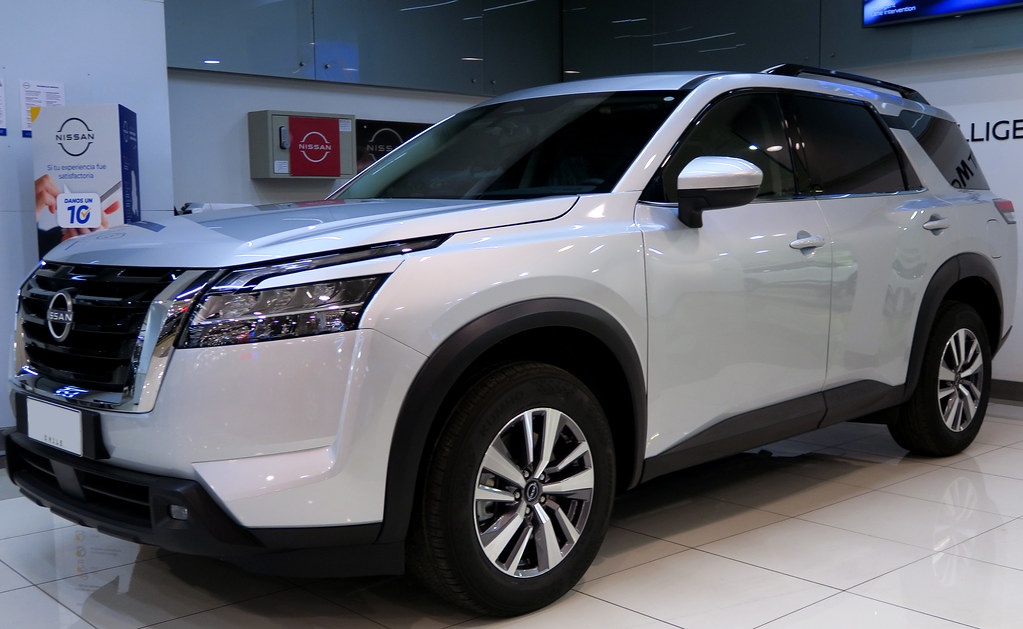
13. **Nissan Pathfinder**As a popular SUV, the Nissan Pathfinder promises adventure and utility, but for many owners, it delivered a journey filled with regret instead. A primary reason for this widespread dissatisfaction, mirroring issues in other Nissan models, is its infamous continuously variable transmission (CVT)—yes, “that transmission again.”
Pathfinder owners frequently reported the CVT manifesting problems like “rough shifting,” an unsettling “shuddering” sensation, and even dangerous “overheating.” These aren’t minor inconveniences; they severely impact the driving experience and raise serious concerns about the vehicle’s long-term durability, especially for an SUV meant for rugged use.
In some severe cases, the CVT issues were so pervasive that owners found themselves needing to “replace the transmission” entirely, a massive and costly repair. Adding to these significant transmission woes were frequent complaints about “engine issues and fuel system problems,” ultimately making the Pathfinder a regrettable purchase for many families seeking reliability.
Car Model Information: 2023 Nissan Pathfinder SL
Name: Nissan Pathfinder
Caption: 2022 Nissan Pathfinder Platinum 4WD (R53, US)
Manufacturer: Nissan
Production: 1985–present
ModelYears: unbulleted list
Layout: unbulleted list
Class: unbulleted list
Chassis: unbulleted list
Predecessor: unbulleted list
Successor: unbulleted list
Categories: 1990s cars, 2000s cars, 2010s cars, 2020s cars, All-wheel-drive vehicles
Summary: The Nissan Pathfinder is a range of sport utility vehicles manufactured by Nissan since 1985. Until the third-generation model, the Pathfinder is based on Nissan’s compact pickup truck platform which it shares with the Navara/Frontier. The Pathfinder was marketed as the Nissan Terrano outside North America. Beginning in 2004, the vehicles were marketed globally as the Pathfinder. In 2012, the R52 series Pathfinder was released as a three-row crossover SUV based on the unibody Nissan D platform, moving away from the body-on-frame chassis format. The role of a mid-size body-on-frame SUV in Nissan’s global lineup was passed to the Terra/X-Terra, which was released in 2018 and based on the D23 series Navara.
Get more information about: Nissan Pathfinder
Buying a high-performing used car >>>
Brand: Nissan Model: Pathfinder
Price: $33,900 Mileage: 18,055 mi.
Read more about: Steer Clear: 15 Vehicles Drivers Have Regretted Purchasing Most
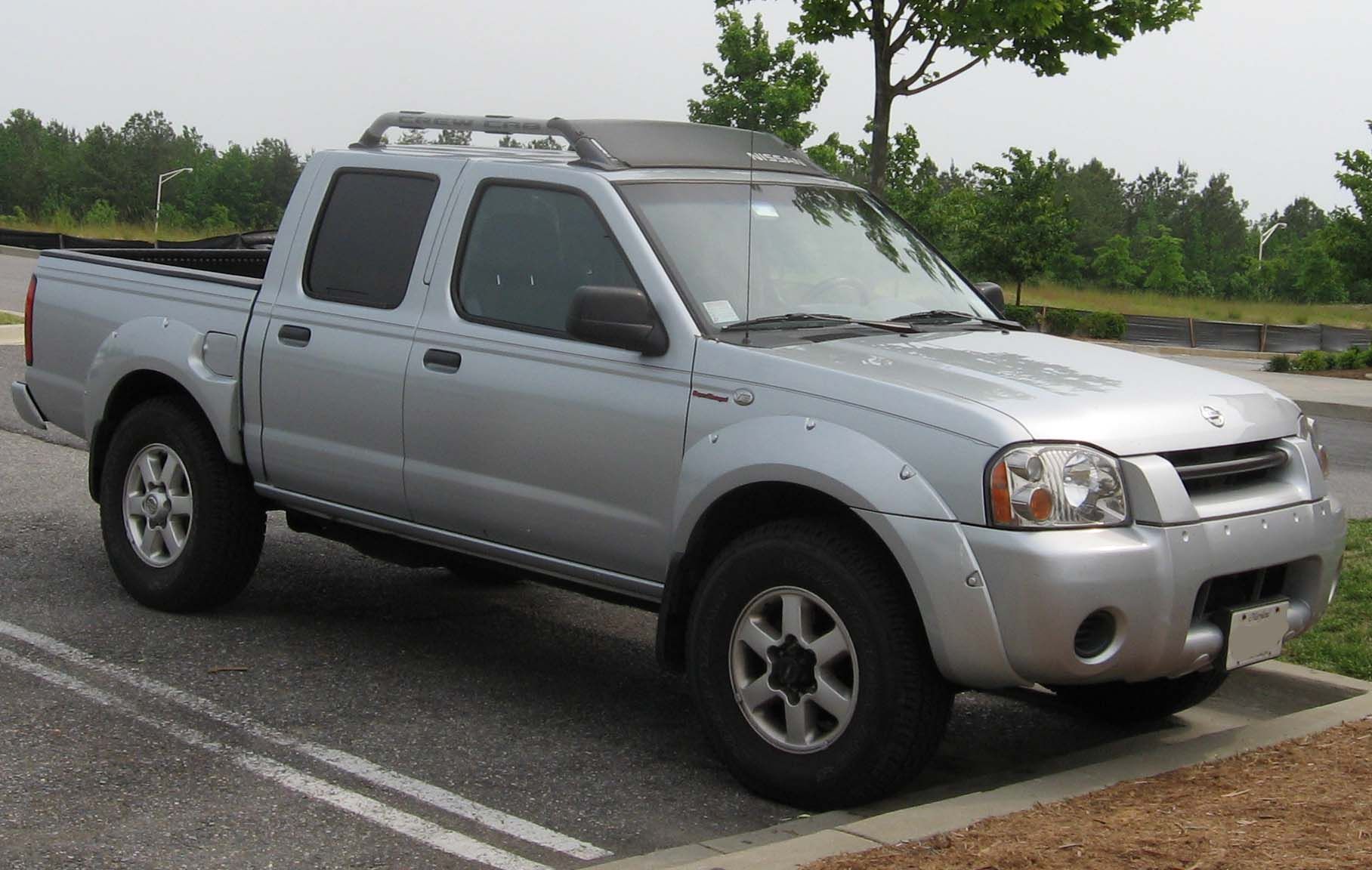
14. **Nissan Frontier**The Nissan Frontier, a mid-size pickup truck, might seem like a practical choice for those needing a versatile workhorse. Yet, a significant number of owners have found themselves utterly frustrated, particularly with models from 2005 to 2010, which became notorious for a critical transmission flaw that led to widespread buyer’s remorse.
During these specific years, a serious design defect allowed the radiator to leak coolant directly into the transmissions. This internal contamination created a cascade of severe mechanical failures, manifesting as “slipping gears,” “herky-jerky shifting,” and ultimately, costly “transmission failure,” completely undermining the truck’s reliability.
Beyond the transmission nightmares, Frontier owners also grappled with persistent “engine and timing chain issues,” further cementing the truck’s reputation as a problem-prone vehicle. These compounding mechanical failures turned a supposed dependable pickup into a constant source of stress and expense, leaving many owners wishing they’d opted for a different brand.
Car Model Information: 2016 Nissan Frontier SV
Categories: All set index articles, Articles with short description, Nissan vehicles, Set index articles on cars, Short description is different from Wikidata
Summary: The Nissan Frontier is a nameplate used on three different pickup truck models by Nissan:
Nissan Frontier (international), an alternative nameplate for the NP300/Navara on some markets
Nissan Frontier (North America), a rebadged NP300/Navara from 1997 to 2021, then became a separate model since 2021
Nissan Frontier Pro, a rebadged Dongfeng Z9 PHEV that will be available from 2025.
Get more information about: Nissan Frontier
Buying a high-performing used car >>>
Brand: Nissan Model: Frontier
Price: $16,949 Mileage: 115,564 mi.
Read more about: Steer Clear: 15 Vehicles Drivers Have Regretted Purchasing Most
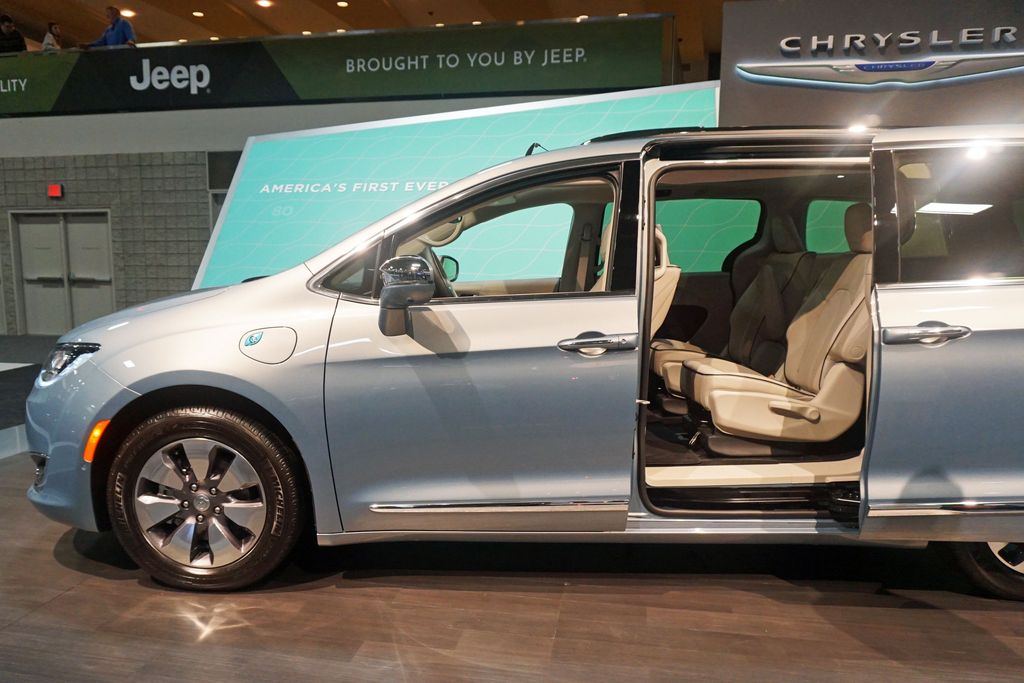
15. **Chrysler Pacifica Hybrid**The Chrysler Pacifica Hybrid entered the market as an appealing minivan, blending family-friendly utility with the promise of plug-in hybrid efficiency. However, for many buyers, the allure of fuel economy wasn’t enough to “offset the battery and electrical problems” that have consistently plagued this innovative vehicle. Many owners answered with a definitive “No” when asked if its benefits outweighed its drawbacks.
Owners frequently cited a range of frustrating issues with the hybrid system, including worrying “battery drain,” an “inconsistent all-electric range” that made predicting electric-only travel unreliable, and even outright “battery failure.” When the core components designed for efficiency are unreliable, the entire premise of a hybrid vehicle falters, leading to deep disappointment.
Adding to the list of woes, the Pacifica Hybrid also struggled with its “electric continuous variable transmission” and other unspecified problems that made the ownership experience far from smooth. For families who invested in a modern, efficient minivan, the reality of persistent mechanical and electrical troubles often led to significant regret.
**Broader Regrets & Problematic Brands (Condensed)**
So, we’ve navigated through 15 specific vehicles that have left owners with a case of buyer’s remorse. But what does this tell us about the broader landscape of car buying? It’s clear that regret isn’t an isolated incident; it’s a common thread in the automotive world, often stemming from misaligned expectations and overlooked red flags.
Buying a new car is a significant commitment, filled with excitement but also potential pitfalls. A LendingTree survey found that “four in 10 of us have had regrets about the car we chose,” highlighting just how prevalent this feeling is. The most common reasons? “Buying the wrong make and model,” followed by “buying an expensive car they couldn’t afford,” and “not shopping around for a better deal.” It really emphasizes the importance of thorough research over impulse buys.
Interestingly, younger buyers tend to experience more regret, with “only 40% of Gen Z’ers” reporting no remorse, compared to “Eighty percent of baby boomers.” And in a surprising twist, “wealthier respondents were most likely to share this worry” about making car payments, perhaps because they’re often splurging on more luxurious—and expensive—models that can quickly exceed budget expectations, especially with rising car prices.
Beyond specific models, certain brands consistently appear on lists of owner dissatisfaction. It’s smart to be aware of these if you’re looking to avoid future headaches.
* **Jeep**: Known for initial thrills but often marred by reliability issues (Cherokee, Renegade), high repair costs, and poor interior quality.
* **Volkswagen**: Attracts with European flair but disappoints with “inconsistent reliability and high repair costs,” especially electronic failures and DSG transmission issues.
* **Chevrolet**: Despite its vast lineup, many models like the Malibu and Equinox are criticized for reliability, tech, fuel economy, and transmission/engine problems.
* **Nissan**: Its reputation has suffered due to widespread “continuously variable transmission (CVT)” complaints and often “outdated” interior tech.
* **Land Rover**: Luxurious and stylish, but owners face “astronomical” maintenance costs and “consistently ranked among the worst” reliability, with electrical glitches and air suspension failures.
* **Chrysler**: Its smaller lineup often suffers from “quality control issues” like faulty electronics and premature wear, coupled with poor resale values.
* **Mini**: Cute and agile, but the charm fades with “high maintenance costs,” cramped interiors, and inconsistent reliability (turbocharger, engine sensors).
**Your Road to Regret-Free Driving**
Car Model Information: 2022 Volkswagen Atlas 2.0T SE
Name: Chrysler Pacifica (RU)
Manufacturer: Chrysler (automotive brand)
Aka: Chrysler Voyager,Chrysler Grand Caravan (Canada, 2021–present)
Production: 2016–present
ModelYears: 2017–present
Assembly: Windsor, Ontario
Designer: Irina Zavatski,Winnie Cheung (interior)
Class: Minivan
BodyStyle: 5-door minivan
Layout: Front-engine, front-wheel drive,Front-engine, all-wheel drive
Platform: Compact U.S. Wide platform
Related: Chrysler 200#Second generation (2014–)
Engine: Chrysler Pentastar engine#3.6L,FCA Global Medium Engine
Motor: 2x electric motors (SiEVT main motor & motor generator; PHEV)
Transmission: ZF 9HP transmission,automatic transmission,Continuously variable transmission
Drivetrain: PHEV
ElectricRange: cvt
Battery: val,lithium-ion battery
Wheelbase: 3089 mm
Abbr: on
Order: flip (hybrid)
Length: 203.6 in
Width: 79.6 in
Height: convert
Weight: {{convert,1964,kg,lb,abbr=on,order=flip
Predecessor: Chrysler minivans (RT)
Categories: 2010s cars, All-wheel-drive vehicles, Articles with short description, CS1 Spanish-language sources (es), Cars introduced in 2016
Summary: The Chrysler Pacifica is a minivan produced by the Chrysler division of Stellantis since the 2017 model year. Replacing the Chrysler Town & Country, the Pacifica is the sixth generation of Chrysler minivans, taking its name from the 2004–2008 product line. Along with serving as the first minivan with a plug-in hybrid drivetrain, the Pacifica has also served as a platform for autonomous vehicle development.
For the 2020 model year, Chrysler repackaged the lower-trim versions of the Pacifica as a revived Chrysler Voyager, largely to expand fleet sales of the model line; following the retirement of the Dodge Grand Caravan, the Chrysler Voyager was introduced in Canada for 2021 as the Chrysler Grand Caravan (moving the nameplate from Dodge to Chrysler after 36 years). Following the retirement of the Chrysler 300 sedan, the Pacifica/Voyager/Grand Caravan is currently the only vehicle marketed by Chrysler.
Chrysler has assembled the Pacifica minivan (and the Voyager/Grand Caravan) in its Windsor Assembly facility in Ontario (home to Chrysler minivan assembly since 1983).
Get more information about: Chrysler Pacifica (minivan)
Buying a high-performing used car >>>
Brand: Chrysler Model: Pacifica Hybrid
Price: $21,999 Mileage: 44,961 mi.
Read more about: Steer Clear: 15 Vehicles Drivers Have Regretted Purchasing Most
So, what’s the ultimate lesson from all these tales of automotive woe? It’s simple: “It pays to do your research—before the regret sets in.” Don’t let a flashy exterior or persuasive salesperson sway you. Focus on your real needs, dive deep into reliability ratings, soak up owner reviews, and check those all-important resale values. Making an informed decision is your best defense against buyer’s remorse. Choose wisely, and here’s to many happy, regret-free miles ahead!

